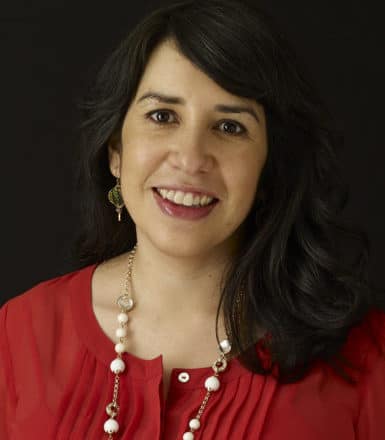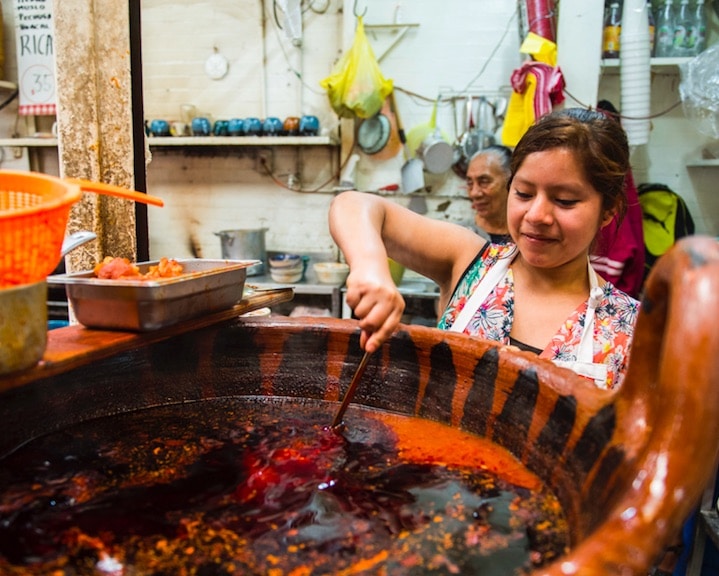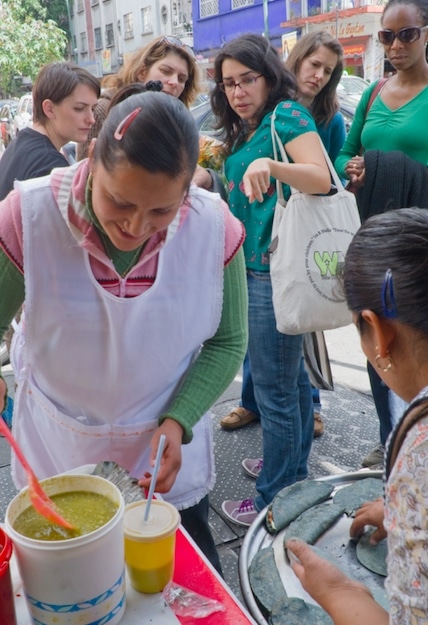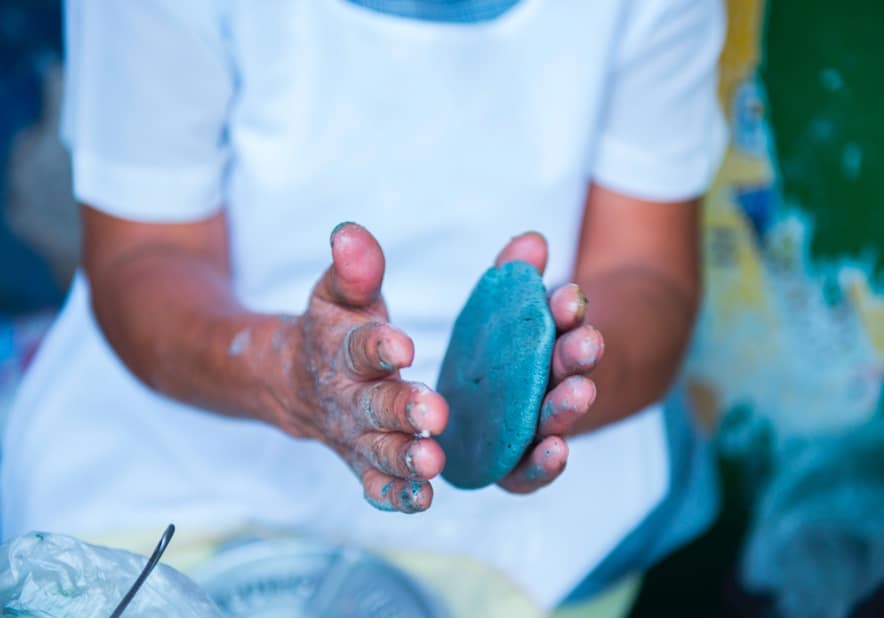
Lesley Tellez, founder, Eat Mexico
Lesley Tellez is founder and director of Eat Mexico, a culinary tour company that introduces visitors to the vibrant street food culture of Mexico City and Puebla. She is a graduate of Escuela de Gastronomía Mexicana and a passionate evangelist for Mexican food through her work as a journalist, food writer, and author of Eat Mexico: Recipes from Mexico City’s Streets.
Lesley spoke with impactmania’s Kristina van Dyke about how she found her calling “to shepherd people to an epiphany about Mexican food.”
BY KRISTINA VAN DYKE
It seems that you found your calling as a food writer and a culinary tour operator by moving to Mexico City. What prompted you to go there?
I had wanted to live in Mexico for a long time. I grew up in a pretty bland Southern California suburb. I wanted to go to college far away so I went to Boston University, which was a turning point for me. I had grown up surrounded by people who looked like me and had Mexican-American last names, and that wasn’t a big deal, but in Boston I realized that people viewed me as an other.
What was your reaction to those perceptions?
I had never thought of myself as anything other than American so it was surprising when people asked, “Were you born in Mexico?” No. “Well, was your mom or grandmother?” Nope. People were shocked that I could look so ethnic, and yet have been born in Los Angeles. Being in Boston made me think more about my identity and who I was. It made me think about why I didn’t speak Spanish, and whether that was important to me.
So did you start studying Spanish at Boston University?
I had grown up hearing a lot of Spanish. My mother is fluent; my mom’s whole side speaks it and is very bicultural. My dad understood Spanish, but didn’t really speak it. My parents didn’t teach me Spanish growing up, but I had studied Spanish all through high school and continued in college. But there’s a difference between studying it in school and actually knowing how to speak and not feeling embarrassed.
Improving my Spanish was something that I wanted to do. So, I studied abroad in Spain my junior year and while I didn’t really connect with the country on a deep level, it opened up the door for Mexico as a possibility because I understood that I could live in a Spanish speaking country.
Had you spent time in Mexico prior to deciding you wanted to go there?
I had spent almost no time in Mexico. I’d only gone to Tijuana, which is where my mom’s family is from. But, in a meaningful way, no. I just had this idea percolating in the back of my head that living in Mexico was something that I wanted to do someday. After I graduated, I moved to Dallas to work for the Dallas Morning News and I thought about Mexico more and more. I fixated on Mexico City because I liked big cities and it seemed really cool.
What were you covering for the Dallas Morning News?
I covered crime, suburban city government, and courts in the suburbs. And then I moved to San Antonio for a brief time and I worked at a bilingual paper there, Conexión.
Were you exploring Mexican-American culture in Dallas or San Antonio as a way to build a path to Mexico?
Definitely in San Antonio, the paper there was aimed at Mexican-Americans living in San Antonio, a city with a vibrant bicultural population. After a few years, I realized that the stories I was writing were the ones I wanted to tell stories about what was happening in the Mexican-American community in the United States.
So San Antonio helped you crystallize your dream of moving to Mexico?
San Antonio allowed me to do some of that. I came back to Dallas after I got married and worked again at a local paper, Quick. It was a youth-oriented daily tab that the Dallas Morning News owned. I had a nightlife column. I was out five days a week reporting on bars and clubs and all of these really fun things.
I was also getting closer to making a decision about Mexico. I was about to turn 30 at that point. My friends were buying houses, having babies, doing all those things. And I was thinking: I don’t want to buy a house or have a baby. I want to move to Mexico.
What did your husband think about the plan to move to Mexico?
We both agreed that now’s the time to do it. We didn’t have anything necessarily tying us to Dallas, aside from a very comfortable life there. He put in for a transfer to Mexico City through his company. We had a back-up plan and a nest egg if that didn’t work.
So you were fully committed. Did your husband commit to this plan because you’d convinced him or did he also have interest in Mexico?
I think part of it was that I had convinced him. But he also really wanted to live somewhere besides the United States. He was a Spanish major in college. We had talked about Mexico from the very beginning of our relationship in our 20s. I honestly don’t think either of us realized how truly life-changing this was going to be for both of us. He got a transfer and we moved to Mexico City in January 2009. I think we had made two trips there before that.
Tell me about that first trip.
I wasn’t so focused on food at the time, but it was a large part of my interests. Shortly after we arrived, we ate lunch at a little fonda. I didn’t know it was a fonda — a very small home-style open air restaurant. In walking to a place where there all these little street stands and men with their ties flung over their shoulders, who were eating their tacos very delicately. When we got to the fonda, there was a musician somewhere in the area playing a trumpet or some sort of horn. The strains were wafting over to the restaurant and I was blown away. The energy and vibrancy immediately struck a chord with me. I thought: I need to live here.
So it only fed your fire?
It ultimately fed the fire, 100 percent. It became kind of a forest fire at that point!

La Merced Tour by Eat Mexico
When you moved to Mexico City in 2009, you didn’t have a job or a plan. Yet, within a year you had Eat Mexico, a culinary tour company, up and running. How did that happen?
I’m the type of person who can’t sit still. When I first arrived, I struggled with the idea that my value and my work had been tied up in a 9 to 5 corporate job and I didn’t have that anymore. My husband was very patient and supportive and said, “Maybe you could just chill out a little bit and the answer will come.” I was like, hmm, maybe so. So I’d say about six months in, it happened and it also coincided with my Spanish getting a little better.
I got started with the tours because I fell in love with Mexican food. I passed street food stands everyday, but I didn’t know what they were serving because nobody had a menu. My Spanish wasn’t very good, and I was too scared to ask questions. I asked my friend who had a tour company that mixed food and culture. I would tell her what I saw and ask her what it was called. And she taught me “That’s a taquero.” And what’s that crumbly orange stuff that they serve? And she told me “That’s longaniza.” I would try to look them up on the Internet but there wasn’t a lot of information about them.
I felt this really extreme hunger to learn more and more and to tell the wider world how exciting this stuff was. It wasn’t anything like the Mexican food I knew in my bland suburban Southern California town. This is where my thinking was when my same friend, Jesica López, asked me to start a food tour company together. I said, “I’m not Mexican. What do I know about Mexican food?” She said, “You actually know more than you think you do, and you have so much passion for it. I think you would be great.”
I agreed to do it and thank goodness, because here I am, seven years later still running this company. (I became sole owner in 2011.) The original idea for the company was to find a way to let people into the world of Mexican food. So much of Mexican food in Mexico City is prepared and eaten on the street. The guidebooks tell you not to eat on the street, but it’s a deep part of the city’s culture. It seemed like such a shame that people really had no way to know it or to figure it out. We launched our company in July 2010. This year, we are projecting to tour around 4,000 people!
Who are your clients and what attracts them to you?.
Most of our clients are Americans ranging form their 30s to late 50s. By and large, they are open-minded travelers who want to connect with the city on a deeper level. They don’t buy into the perception of Mexico as unsafe or dirty or somehow not worth their time. We are also seeing more people who already know a little bit about Mexican food.
One of the things that you’re providing your clients is an introduction to Mexican cuisine.
Exactly. For example, we try to give people an understanding of the basic ingredients in the traditional Mexican diet and the pre-Hispanic diet, which are corn, beans, and chilies. At the same time, we help our clients navigate Mexico City, which can feel really hard and overwhelming.

Street Food Tour with Eat Mexico
When people take the tour, we’ll give them seven to eight really awesome places that they can keep going back to in a particular neighborhood. We don’t bill it as a superficial food eating tour. From the very beginning, our point has been to connect clients with the food of Mexico City and the people who are preparing the food and to do so on a deeper level then they otherwise would have been able to. Part of the way we do that is to keep our tours small, capping them at six people.
How do the owners of the food stalls and fondas react to the clients on an Eat Mexico tour?
I think most vendors feel pride that they’re included on the tour and that they’ve been able to enrich other people’s lives through what they’re doing. Watching someone’s face who has never tried a tlacoyo or a taco de canasta, or who has never tried carnitas bite into it for the first time is really nice.

Tlacoyo vendor
We charge $85 a head for most of our walking tours. The minimum wage in Mexico City is 70 pesos a day. We give the vendors a gift every year, an acknowledgement of our appreciation for them. But we would like to create more of a community component to the tours in the future. How do we share our knowledge with the community in the various neighborhoods we visit, beyond the people who can pay $85 a head? We’ve been able to learn so much and we’ve been able to get to know so many people and learn their stories. There has to be a way to share this knowledge with the community at large.
Do you see a lot of interest in Mexican cuisine on the ground in Mexico City? Would you ever think about setting up a cooking school in Mexico City?
That’s actually exactly the thing we’ve been talking about at Eat Mexico. I don’t think that food tours are the end all and be all. The most valuable and fulfilling thing is being able to shepherd people to an epiphany about Mexican food. So what are the other ways that we can do that? How can Mexicans in Mexico City be the messengers of that information?
In addition to going on an Eat Mexico tour or buying your cookbook, Eat Mexico: Recipes from Mexico City’s Streets, Markets & Fondas, what sources should readers who are interested in knowing more about Mexico City and Mexican cuisine consult?
Hugo Ortega’s book, Street Food of Mexico is great. It gives you a look at the more popular food in Mexico, not the higher end type of food. I think Enrique Olvera’s cookbooks are amazingly well done. I’m kind of a fan girl actually. I have Mexico from the Inside Out. He writes about Mexican cooking in a thoughtful and creative way.
Diana Kennedy‘s books are good if you are starting off on any Mexican food journey. Mexican Regional Cooking is full of stories and one my favorites. I love reading her cookbooks because they help you imagine the diversity and variety of Mexican food. My bible is Ricardo Muñoz Zurita’s Larousse Diccionario Enciclopedico de la Gastronomia Mexicana. I open that thing on a weekly basis to re-up again on all kinds of ingredients.
ESGAMEX is a very cool YouTube channel produced by the Escuela de Gastronomía Mexicana. It’s in Spanish, but the two owners walk you through the preparation of different dishes or take you to different neighborhoods. It’s really interesting. Mexico Cooks! is a great website. Cristina Potters writes about food in different regions of Mexico, and she’s lived in Mexico for decades. Good Food in Mexico City is another website. It’s by a friend, Nick Gilman, who writes restaurant reviews in Mexico City.

